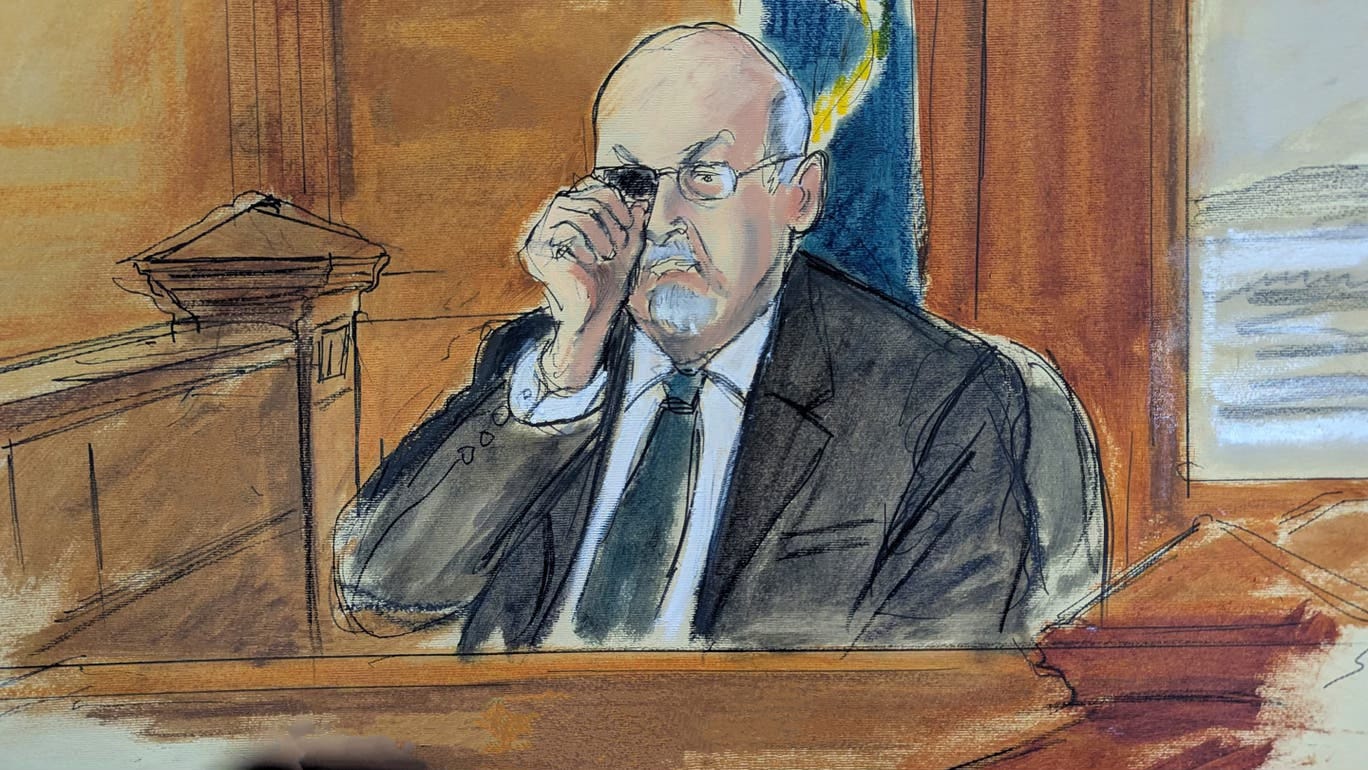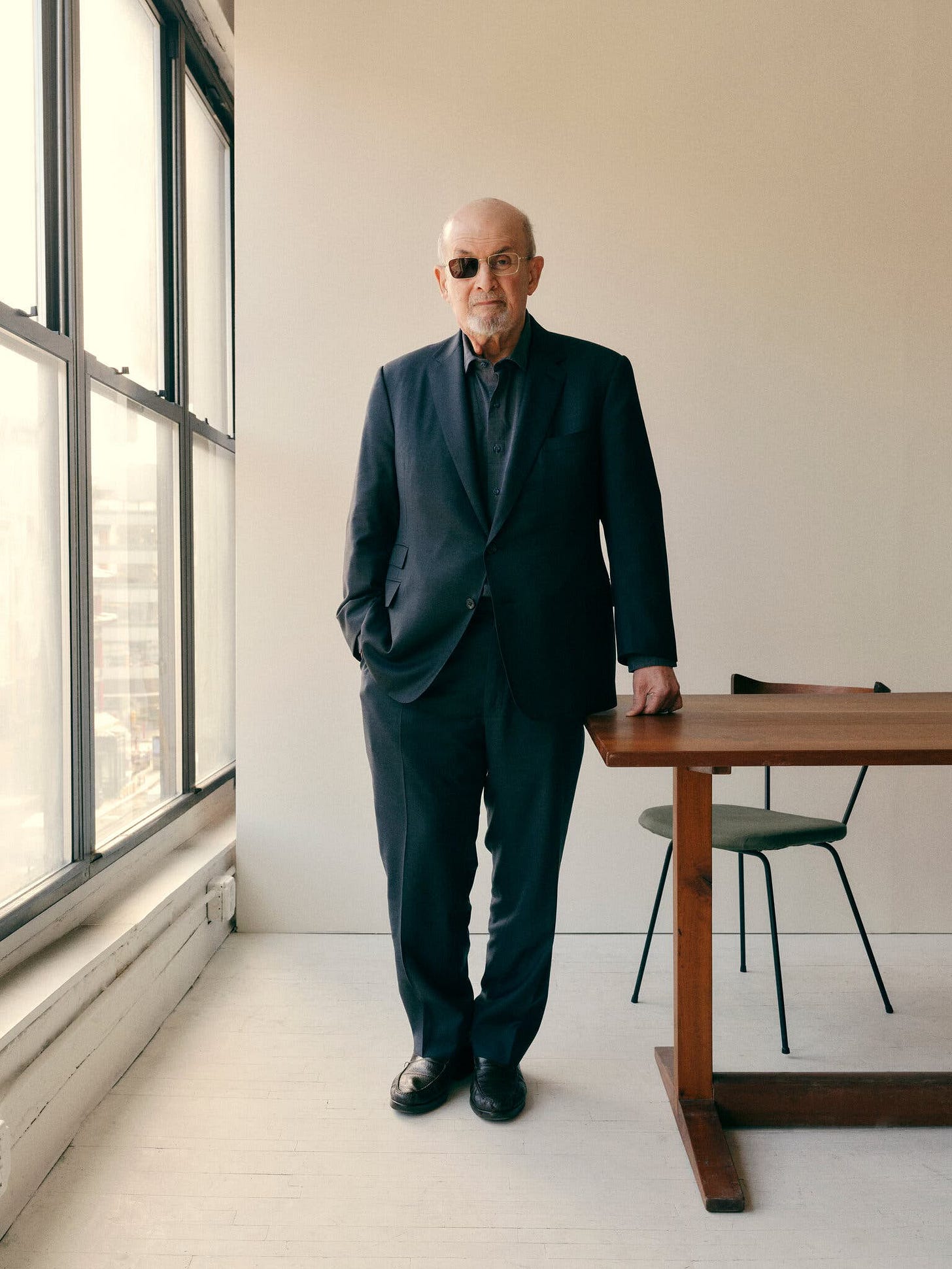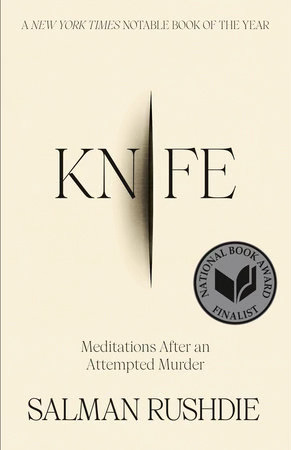Final Update: May 16, 2025:
A Chautauqua County judge has sentenced Hadi Matar to 25 years in prison for the attempted murder of author Salman Rushdie and the assault of a bystander who came to his aid.
A maximum sentence was a virtual certainty. As a former prosecutor and criminal defense attorney in New York for 30 years I believe the sentence, while harsh, is legally appropriate.
As I discussed below, Matar’s actions were premeditated and indefensible. He attacked an unarmed, elderly, seated man without provocation, blinding him in one eye and nearly killing him.
There were no legal defenses to his actions, he did not accept responsibility by admitting his obvious guilt, and he expressed no remorse.
I hope you found my coverage of People v. Hadi Matar informative.
If you have not already done so, please subscribe to American Karma at americankarma.substack.com/subscribe.
cover photo by AP.
Update: April 24, 2025:
On February 21, 2025 a Chautauqua County jury found Hadi Matar guilty of the attempted murder of author Salman Rushdie and guilty of assaulting a bystander.
Sentencing was scheduled for April 23, 2025; the sentencing proceeding was adjourned at Matar’s request. The new date is May 16, 2025.
Matar faces up to 25 years in prison.
Watch this space.
Update: February 21, 2025:
After less than two hours deliberation, a Chautauqua County jury found Hadi Matar guilty of the attempted murder of author Salman Rushdie and guilty of assaulting a bystander.
Sentencing will take place in several weeks. Matar faces up to 25 years in prison. Expect him to get every minute of that maximum sentence.
UPDATE: February 20, 2025:
Since Salman Rushdie’s testimony on February 11, 2025, the prosecution has been introducing DNA evidence, the knife, and other physical evidence in the case.
In order to be admissible, physical evidence must satisfy certain evidentiary criteria. For example, admission of the knife allegedly used to stab Mr. Rushdie may be made only after the prosecution establishes an unbroken chain of custody to prove that there has been no tampering.
The usual practice is for admissibility issues like this to be resolved pre-trial. As a prosecutor, I would send copies of all chain of custody documents to defense counsel. If there was a break in the chain that affected admissibility, a pre-trial hearing would be held and the Court would rule the knife in or out of evidence in advance of jury selection.
In this way, the parties would proceed to trial knowing whether or not key pieces of physical evidence would be part of the case. For example, if the Court determined that the knife was inadmissible, as a prosecutor I would manage my proof accordingly.
If the Court determined the knife was admissible, defense counsel would be expected to stipulate to its admission, thus preventing every person who had custody of the knife from appearing in Court, explaining every link in the chain.
Stipulating to evidence is in the interests of both parties, as several days of the jury’s time and attention are not wasted on housekeeping matters.
It is likely that Mr. Matar refused to stipulate to admission of any evidence against him, as is his right. The government bears the burden of proof at all times.
The jury has heard from Mr. Rushdie’s trauma surgeon, who testified that the injuries could have been fatal without the proper treatment. On cross-examination he said no major organs or arteries were impacted and that the surgery and recovery were “pretty routine.”
One eyewitness testified that she “thought it was staged and really was part of the theme of the day, of the danger that some authors are in.”
Yesterday, February 19, 2025, a Forensic Biologist from the Erie County Crime Lab testified about the DNA found on the knife matching that of Mr. Matar. While I cannot fault the prosecution for being thorough, Mr. Matar was arrested at the scene, literally red-handed, and feet away from the crime scene.
That is, DNA evidence seems unnecessary. Given the amount of jury attention devoted to prove something not in question, this strategy risks confusing the issues and diverting attention to complex, collateral issues such as DNA extraction, analysis, and allele inheritance.
Listening to DNA testimony is like sitting through chemistry class and most jurors are glassy-eyed after a couple of hours.
That said, the prosecution has rested. At 2:00PM on Thursday February 20, Mr. Matar also rested, declining to testify on his own behalf and calling no witnesses.
Closing arguments are scheduled for Friday, February 21, after which the jury will begin deliberations.
I predict a quick guilty verdict.
ORIGINAL POST: February 12, 2025
Two nights before I flew to Chautauqua, I had a dream about being attacked by a man with a spear, a gladiator in a Roman amphitheater. There was an audience, roaring for blood. I was rolling around on the ground trying to elude the gladiator’s downward thrusts, and screaming.
Salman Rusdhie, “Knife: Mediations After an Attempted Murder”
Opening statements began Monday, February 10, 2025 in People v. Hadi Matar, the trial of the man who, on August 12, 2022, acted on Ayatollah Khomeini’s fatwah and allegedly tried to stab Salman Rushdie to death onstage at the Amphitheater of the Chautauqua Institute.
I was a criminal lawyer for thirty years in the Buffalo area, just north of Chautauqua County, New York. As I did during the December 2024 “subway chokehold” trial of Daniel Penny, I will discuss the issues in the case, including elements of the crime, criminal intent, and the burden of proof.
Rushdie wrote a book about his experience, “Knife,” which I have read carefully. I will examine the trial from both legal and literary perspectives.
In the interests of full disclosure, the reader should be aware that I am a great admirer of Salman Rushdie both as an author and as a person. I have read all of his books and I believe history will regard him as one of the greatest writers of our time.
Rushdie’s work beautifully and unflinchingly interrogates themes of religion and politics, generating controversy and menace from powerful actors who wish to silence him, including the infamous 1989 fatwah calling for Rushdie’s murder. That edict was republished by the Iranian government August 7, 2022, five days before the attack.
Throughout his career, Rushdie has handled the thuggish threats to his life with courage and grace. Not only has he built a remarkable body of work, he became a powerful advocate for free expression and writers under threat.
Indeed, his August 2022 appearance at Chautauqua was on behalf of the City of Asylum Project, the largest residency program in the world for writers living in exile under threat of persecution.

An Indefensible Case
Like all professions, criminal defense lawyers use jargon that may mean one thing in ordinary speech but something else in professional context. When a criminal defense attorney says a case as “indefensible,” it is not a moral judgment but a legal one, meaning that there is no viable legal defense. This is the case in People v. Hadi Matar.
There are two basic types of defenses in criminal cases: “I didn’t do it,” or mistaken identity, and “I did it but . . .” admitting the act but offering a legal defense such as self-defense, insanity, or illegally obtained evidence.
Matar cannot legitimately claim any of these.
First, there is no question that he - not someone else - stabbed Salman Rushdie at the Chautauqua Amphitheater. Thousands of people witnessed him rush the stage and stab Rushdie; as in the photo above he was subdued and arrested on the spot.
Second, he there are no affirmative defenses available to him. He stabbed a seated, elderly, unarmed man and cannot claim self defense. He has been examined by medical professionals and it has been determined that he understood his actions and is capable of assisting in his own defense, so he cannot claim insanity.
Finally, I will state the absurdly obvious, that New York doesn’t recognize “the Ayatollah made me do it” defense.
Thus, the defendant’s only hope is based on jury nullification, or a unanimous, collective refusal by the jury to follow the law, setting Matar free as an act of political protest.
I know Chautauqua County juries well. That is not going to happen.
Attempted Murder, Assault 2,°And Acting Intentionally
Matar is charged with two felony offenses, Attempted Murder 2° (Penal Law 125.25-1) which reads: a person is guilty of murder in the second degree when with intent to cause the death of another person, he attempts to cause the death of such person or of a third person.
He was also indicted on Assault 2° (Penal Law 120.05-2) which reads: a person is guilty of assault in the second degree when with intent to cause physical injury to another person, he causes such injury to such person by means of a deadly weapon or a dangerous instrument.
Thus, the prosecution must prove that Matar intentionally attempted to kill Rushdie and injured him by stabbing him with a knife.
Murder 1° no longer exists in New York, as it was a capital offense which carried the death penalty. New York’s highest court ruled the death penalty unconstitutional in 2004, annulling the Murder 1° statute.
As to whether Matar acted “intentionally,” I give a detailed explanation of culpable states of mind in a previous post.
Attempted Murder is a Class B felony, punishable by up to 25 years in prison.
Matar has also been indicted in federal charges, which I will address in a future post.
Opening Statements, February 10, 2025
In his opening statement, Chautauqua County District Attorney Jason Schmidt said that just as the lecture was starting Matar, wearing a man dark clothing a face mask, and carrying a knife, launched himself up a flight of stairs and began to run at Mr. Rushdie.
In an oblique reference to the fatwah, Schmidt said Matar was “seemingly on a mission.”
Then, Mr. Schmidt said, Matar “plunged the knife into Mr. Rushdie over and over and over and over again, stabbing, swinging, slicing into Mr. Rushdie’s head” before he was subdued.
Schmidt said he would introduce surveillance footage, the knife Matar used, and two additional knives recovered from Matar’s backpack.
Defense counsel Lynn Schaffer’s opening was underwhelming, admitting that the case was no “whodunit,” but urged skepticism, saying “nothing is that simple in life.” She emphasized the presumption of innocence, saying “[a]s he sits here today, Hadi Matar is innocent. You don’t get to assume anything about him.”
Having been in the position of defending an indefensible case, there was little else she could do.

The Prosecution’s Case
Following opening statements, The District Attorney called Chautauqua Institute employee Jordan Steves, who testified that he watched the attack unfold on a monitor before rushing out and lowering his shoulder against Matar “to try to disrupt what was happening.” Matar was then taken into custody by law enforcement.
Rushdie took the stand Tuesday, February 11. Now 77 years old, he testified he had been sitting on stage ready to address an audience when he noticed a person rushing at him from his right-hand side.
He described the attacker as wearing dark clothes and a face mask, saying he was struck by the individual's eyes, "which were dark and seemed very ferocious".
Rushdie said he felt the first blow to his right jaw and neck, and thought at first that he had been punched until he saw blood pouring on to his clothes. He said, “[a]t that point he was hitting me repeatedly, stabbing and slashing.”
Rushdie testified that he was struck fifteen times his eye, cheek, neck, chest, torso and thigh; he suffered a defensive wound to his left hand.
Rushdie said the knife wound to his eye was the most painful. He removed his glasses which concealed the now blinded right eye, saying “as you can see, that is what is left of it. There's no vision in the eye at all."
Rushdie said that he was felt like he was lying in “lake of blood,” and “[i]t occurred to me quite clearly that I was dying - that was my predominant thought".
Rushdie spent two weeks at a Pennsylvania hospital and more than three weeks at a New York City rehabilitation center. His mental and physical recovery were chronicled in his book Knife: Mediations After an Attempted Murder” (Penguin Random House, 2024).
As to his current health, Rushdie said “I think I’m not quite at 100%. I think I’ve substantially recovered but it’s probably 75 to 80%, I’m not as energetic as I used to be. I’m not as physically strong as I used to be.”
On cross-examination, defense counsel suggested that Mr. Rushdie’s recollection of the incident may have been compromised by trauma, but it seemed to little avail.
Testimony continues tomorrow. Watch this space.





